Scottish getaway to Edinburgh
There is more than meets the eye to Edinburgh. This beautiful, walkable, human-scale city is the ideal playground for a weekend getaway. If you’re wondering what there is to do, see and eat in the capital of Scotland, here is a quick guide to experience it to the fullest.
Scotland is a country of wild, enchanting landscapes, of tiny quaint villages, of cultural and artistic heritage, and of charming pubs where you can enjoy local fare and rub elbows with the regulars. This is an invitation to tread past Hadrian’s wall and discover what lies beyond.
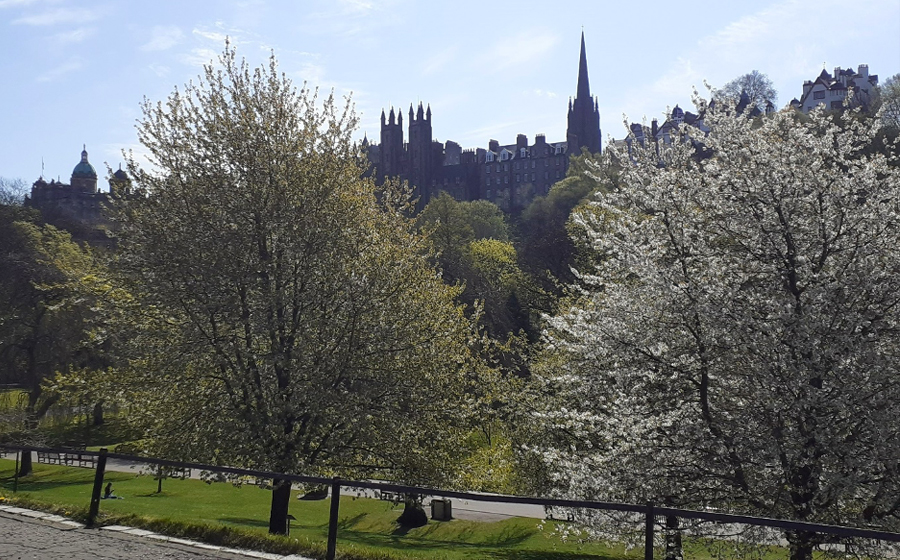
Scotland, a land of legends
Going to Scotland feels a little like time travel. Yes, this country has modern cities with modern people that live in them. But the place is positively steeped in history, and the surrounding landscapes feel perfectly mythical.
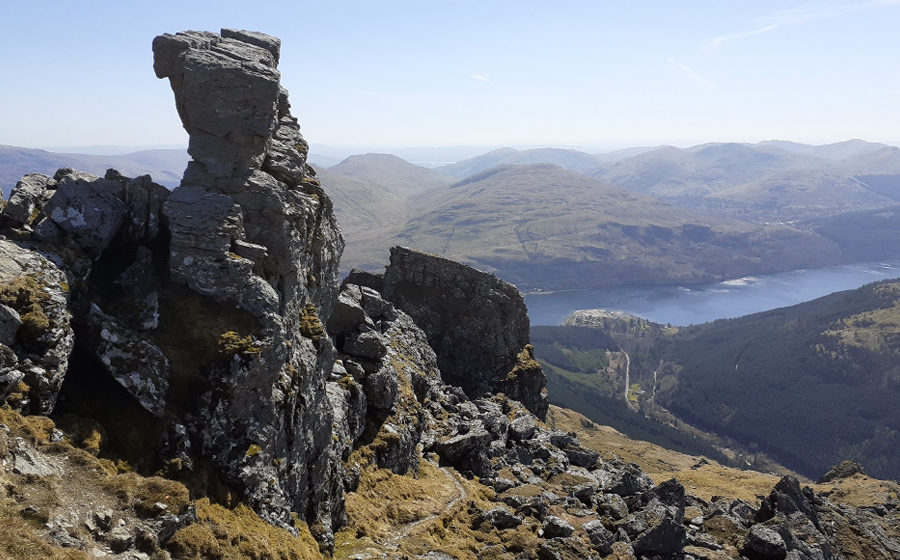
Best characterised by its history, its landscapes, its unique atmosphere (and unique accent!), this UK nation is decidedly different from its neighbours.
France and Scotland enjoy one of the oldest alliances in the world: the aptly named Auld Alliance. Visitors from the continent and beyond are often intimidated by the Scottish accent, but they need not worry. With a bit of humour, patience, and renowned Scottish hospitality, you can break through the language barrier in a heartbeat.
Edinburgh, the Athens of the North
You would be right in doubting whether the above comparison has anything to stand on. However, the analogy dates back a couple centuries and is not entirely unfounded: Edinburgh is a port city, with Neoclassical architecture, and it was a hub for philosophers of the Enlightenment. By the way, Edinburgh was named best city in the world by Time Out magazine in 2022. Why not go and see what all the fuss is about?
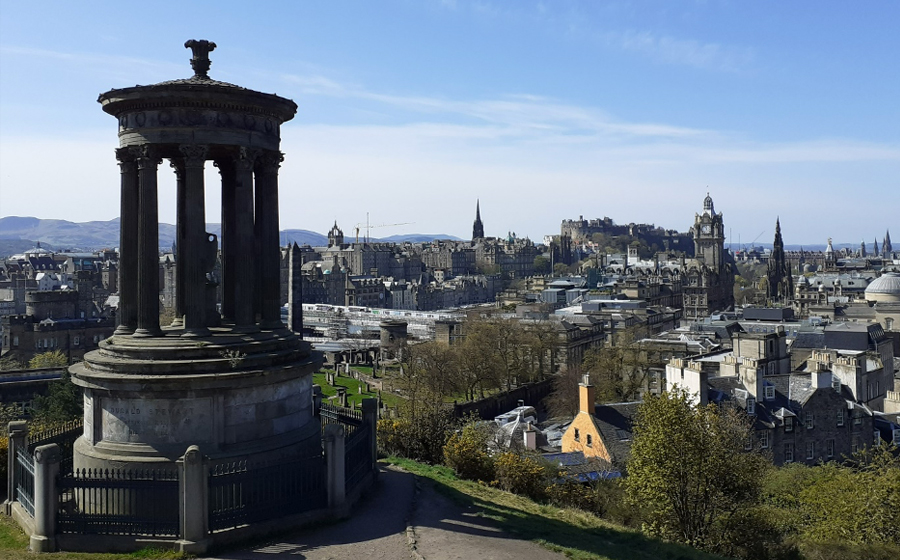
While Glasgow is Scotland’s most populated city, Edinburgh (pronounced “e-din-barra”, although the locals will teach you better than we ever could) is the historical, political and cultural capital. It lies on the Scottish east coast, by the banks of the Forth river, which flows into the North Sea. The city’s New Town and its gorgeous Georgian buildings evoke the memory of London’s chic neighbourhoods. But make no mistake: the traditional pubs on the Royal Mile are a reminder that you’re in the land of whisky.
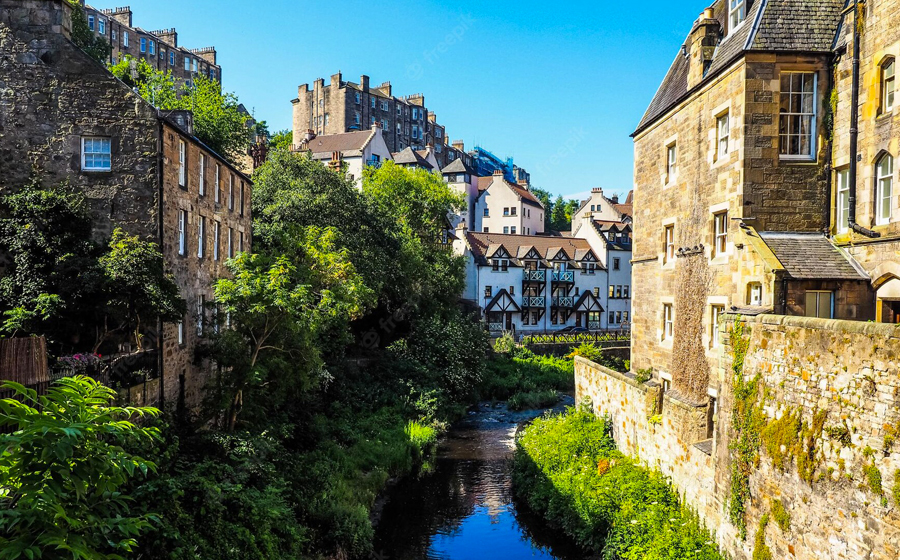
Speaking of scotch: while most distilleries can be found further north (in the Speyside area) and in the western islands (including Islay), Edinburgh does not fall short of the mark when it comes to the world-famous grain spirit. The city is home to a multitude of pubs, and many establishments offer whisky tastings.
A city upon a hill
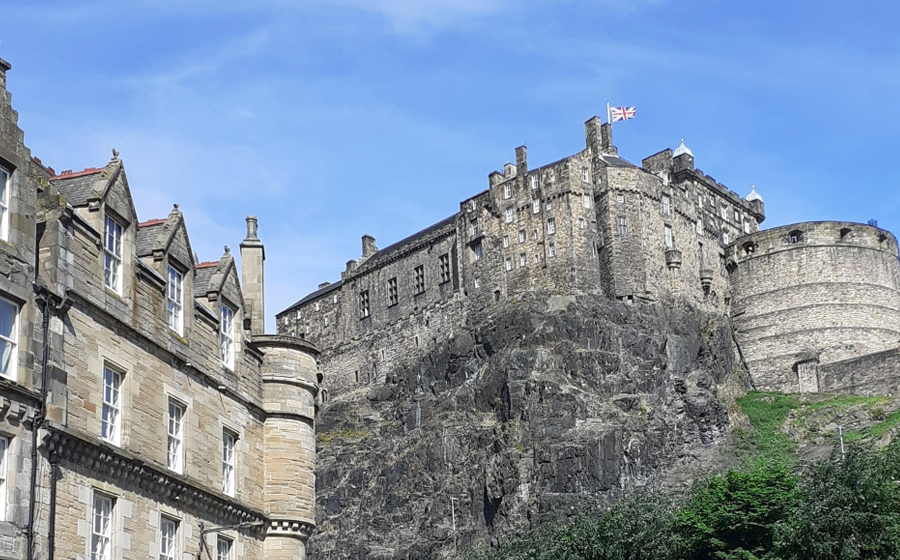
First-time visitors arriving in Edinburgh are bound to notice its buildings. With their smoky red brick façades and sharp, spire-like roofs, they are the emblem of the city’s characteristic 19th-century architecture.
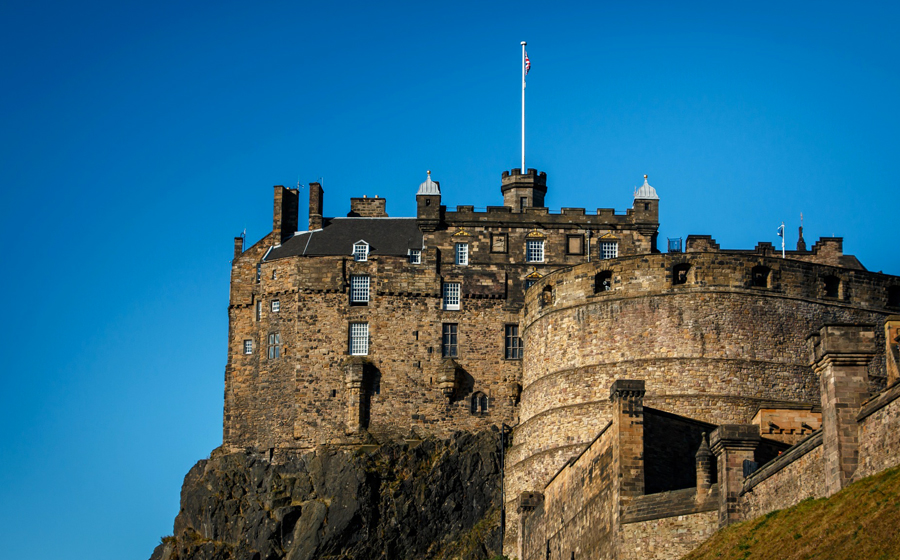
The city centre, also known as Old Town, is best explored on foot. You might join a walking tour, such as the Real Mary King’s Close, pop in a small shop, or simply bask in the atmosphere of this unique city.
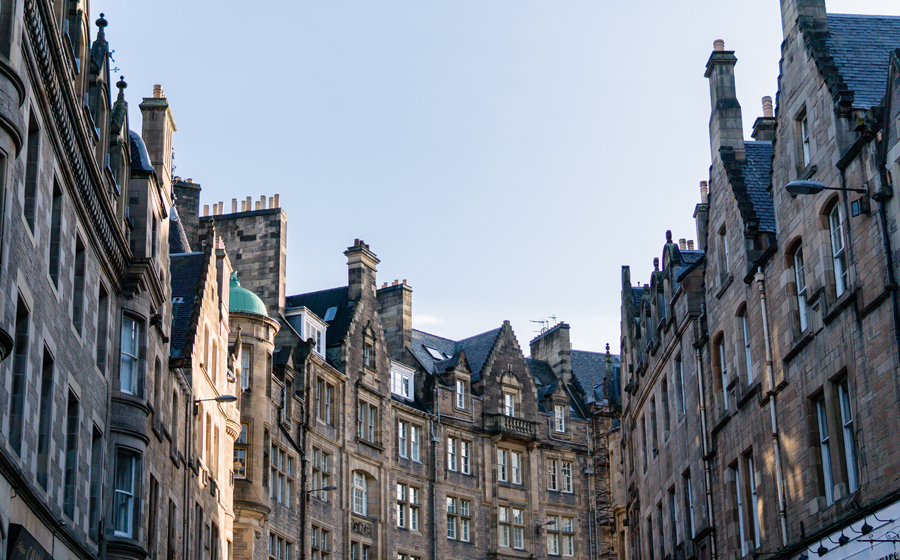
As for the city’s main landmark, it’s very hard to miss: Edinburgh Castle, from the top of its craggy rock, is a towering marvel overlooking the city. You can admire it from below, standing in the Princes Street Gardens, or walk up the hill for a visit (£20). Edinburgh has a few hills – some say seven, in reference to Rome. Here are a couple more that are worth a look: Arthur’s Seat, a true breath of fresh air sitting right in the middle of the city, decked out in gorgeous yellow in the spring. The walk to the summit can be done regardless of age or fitness level, and the view from the top is breath-taking. There is also Calton Hill, where you will find many Neoclassical monuments (including the National Monument of Scotland).
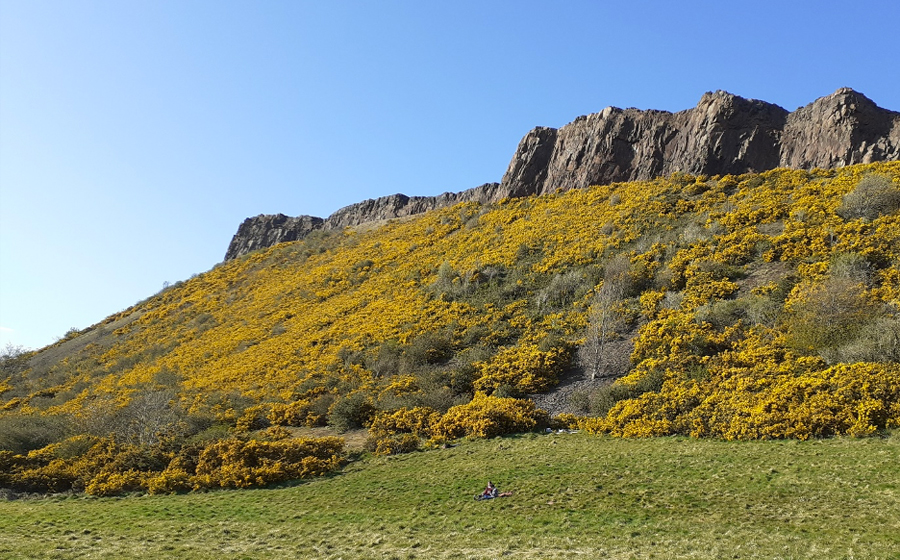
Off the beaten path – Golf
Scotland is also the land of golf. Some even say that’s where the sport was born! Either way, the first rules (many of them still in use today) were laid by the very serious Royal & Ancient Gold Club of St Andrews, the world’s oldest golf club.
If you wish to practice your favourite hobby against a wild, rugged backdrop, set out on a golf pilgrimage to the St Andrews region, the cradle of the centuries-old sport, about 1.5 hours from Edinburgh by car. A talk with Frank Sans C revealed that the Kingsbarns course, a quick drive over, is also a great spot. He even admits that he prefers it to the Old Course and calls it “the most spectacular of Scottish links”. http://www.kingsbarns.com
And if you’re already familiar with St Andrews and find it a bit too touristy, here is an insider’s tip: make the trip to Balcomie, a 20 minute’s drive away. Less busy, just as scenic. You’re welcome!
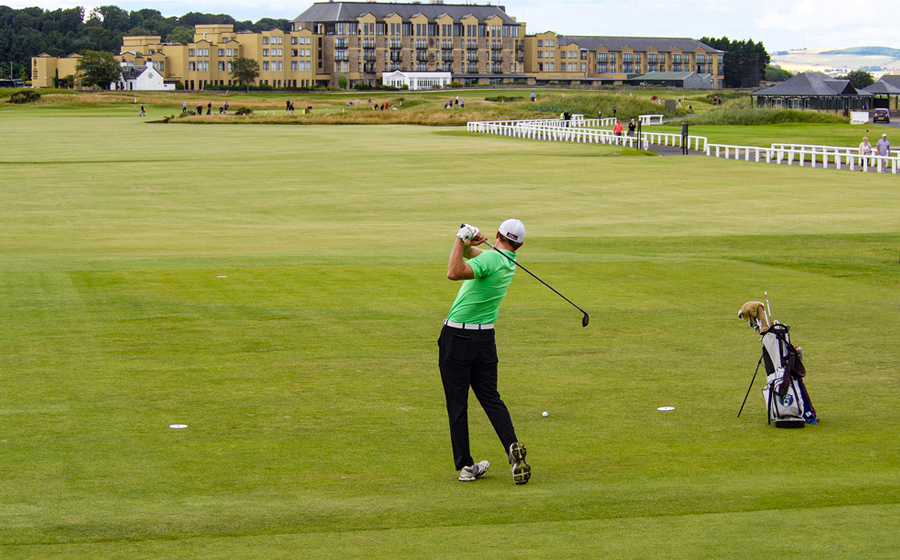
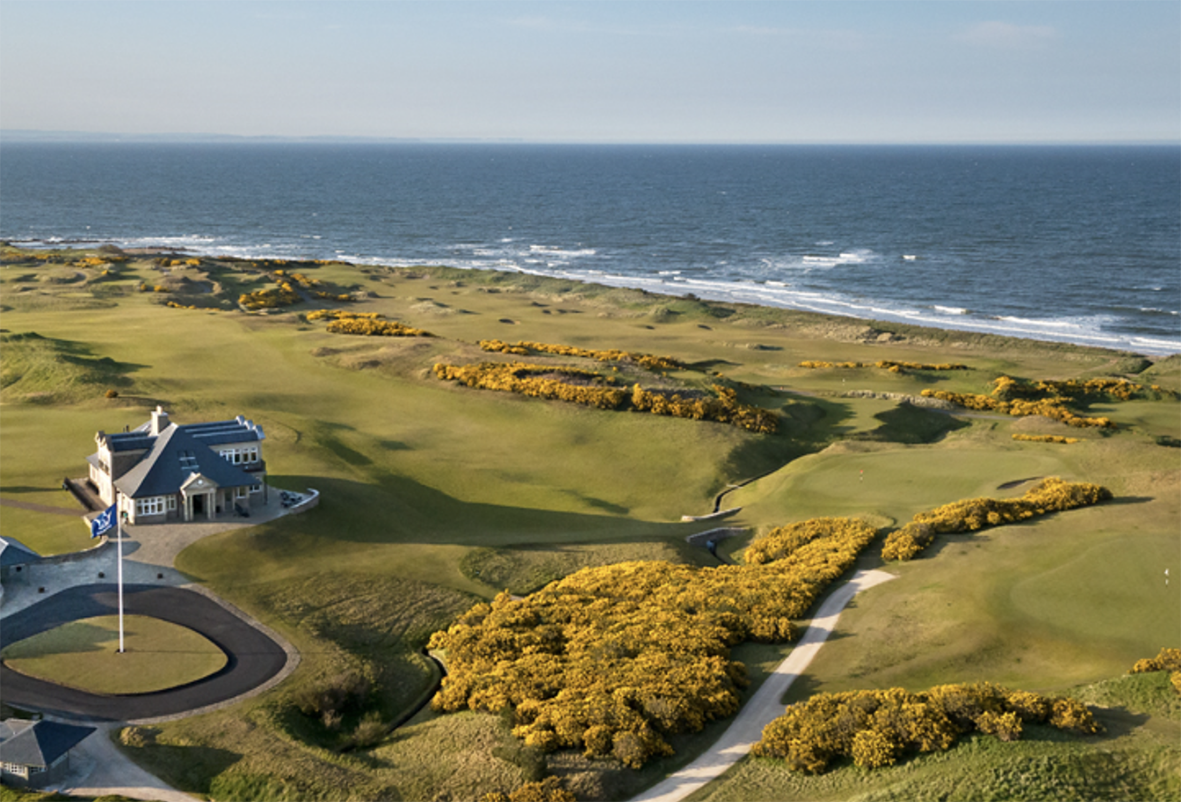
Arts and culture
Those who are familiar with London will get back to a few of their habits: the museums are free, and the rest is paid in pounds sterling. The Scottish National Gallery is home to a wealth of artworks: Botticelli, Gauguin, Velasquez. The National Museum of Scotland tells the story of the Scottish people, along with exhibits on science and technology.
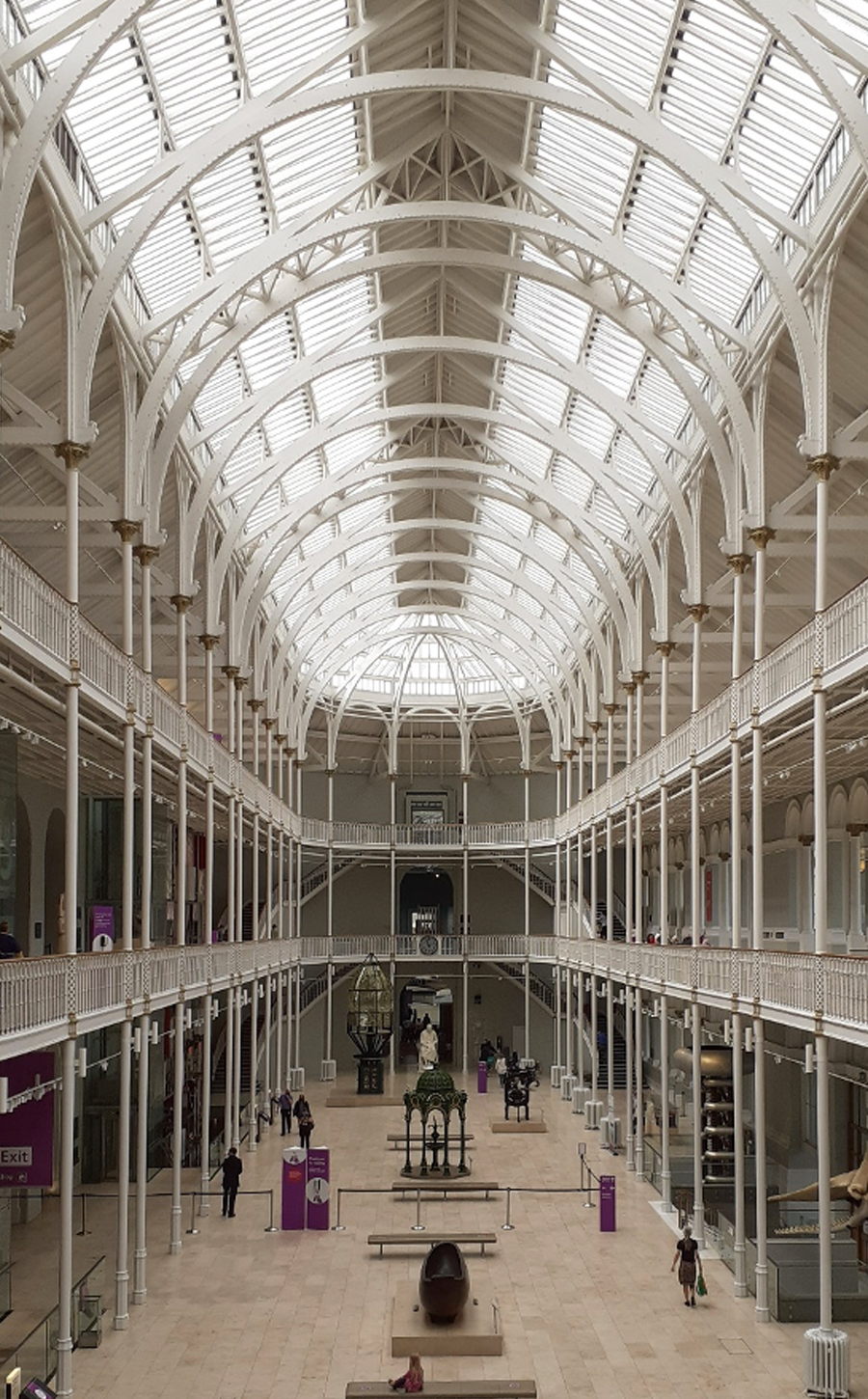
Every summer in August, the city hosts the Edinburgh Fringe Festival.
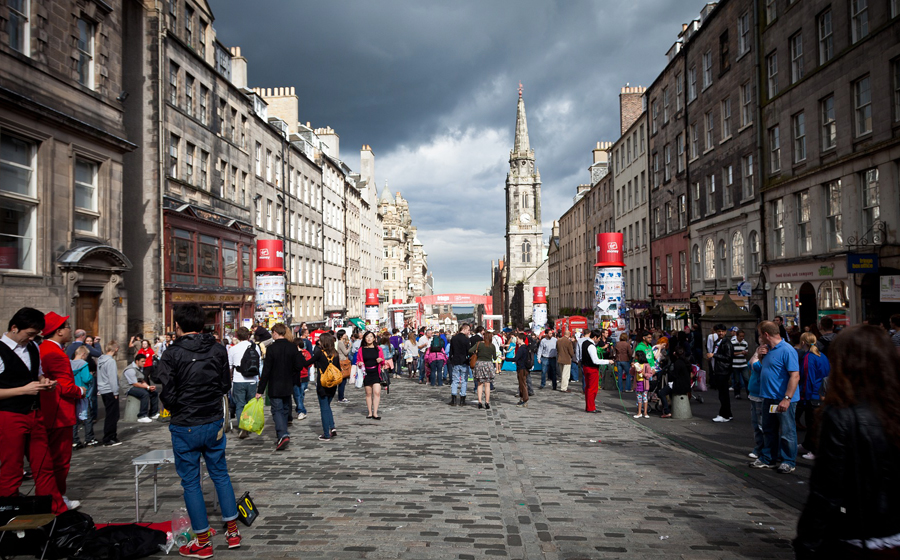
The Fringe is the world’s biggest arts festival and attracts over a million visitors every year. For three weeks, the city’s main artery, the Royal Mile, is crammed with hundreds of artists, street performers, and spectators from all over the world.
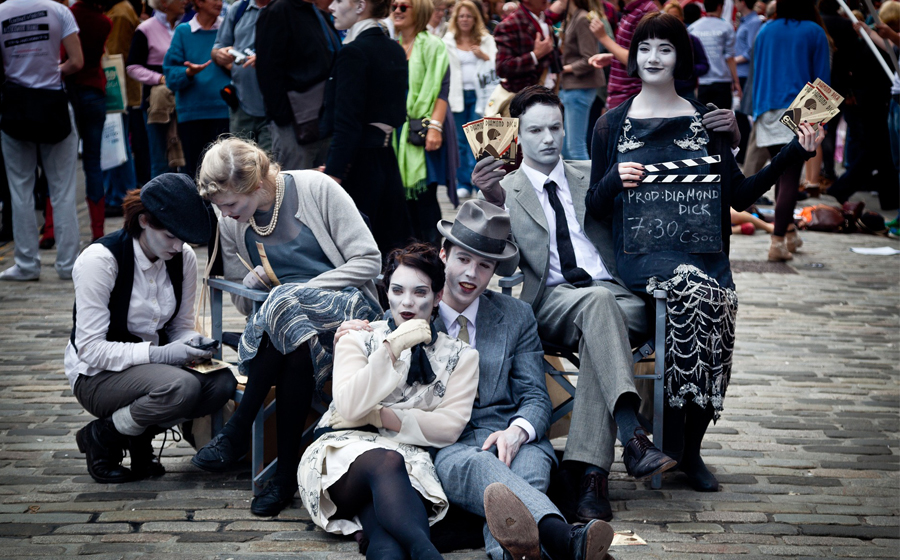
Shopping and dining
Don’t believe the rumours. Edinburgh has lots to offer in terms of food, it’s not all haggis. If you happen not to be a fan of spiced mince stuffed in sheep casing (although the brave will be rewarded for giving it a try!), the city is full of traditional inns and pubs, quaint little cafés, and fine dining restaurants. The food scene is constantly expanding to fit all tastes.
For an unusual experience, head for Camera Obscura, a museum that was built over a hundred years ago, offering a virtual visit of Edinburgh using technology from the Victorian era. The building also houses a multi-storey Illusion Museum, a great place to take the family on a rainy afternoon. The view of the city from the rooftop is also well worth a look.
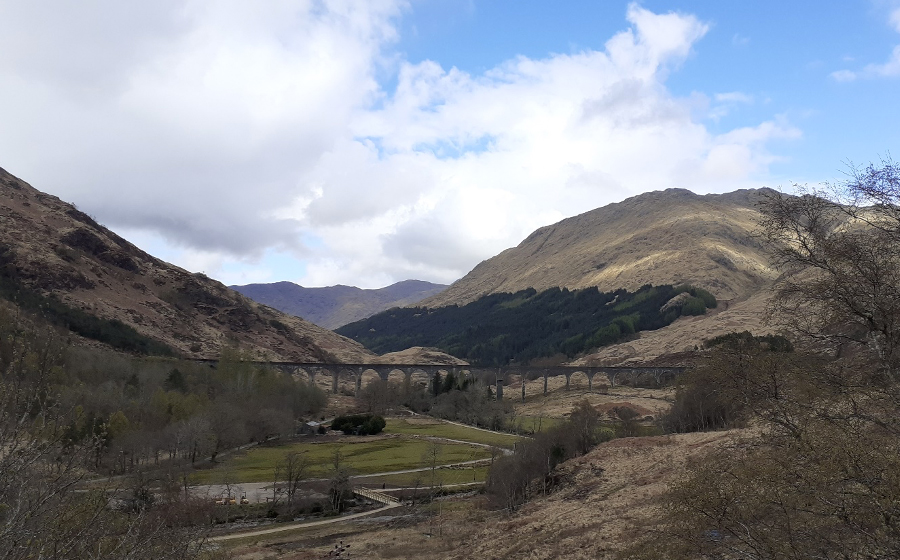
made famous by its appearances in the Harry Potter films!
If you’re on the hunt for gifts and souvenirs to take home, the Tartan Weaving Mill, an old kilt-making factory, stocks a wide range of products, including finely-crafted clothing. Entire floors dedicated to Harry Potter and Game of Thrones are bound to please lovers of these franchises.
Edinburgh has an abundance of boutique hotels, charming bed and breakfasts, as well as more affordable options: there’s an accommodation to fit every budget.
Off the beaten path – The Loch Ness
About 3.5 hours from Edinburgh by train (take a window seat to enjoy the dramatic landscapes!), you will find Inverness, a charming Highland town, home to the mythical Loch Ness. The legend of the monster supposed to lurk beneath the water has drawn many an inquiring mind to Scotland’s largest lake. Try to catch a glimpse of Nessie, or visit the fascinating ruins of Urquhart Castle.
If monster hunting is not your cup of tea and you would rather be hiking, Fort William is worth a detour. Enthusiasts from all over the UK and beyond flock there to try their hand at climbing Ben Nevis, the highest mountain in the British Isles. The summit is 1,345 meters above sea level – it’s no Mont Blanc, but a great hiking experience nonetheless.
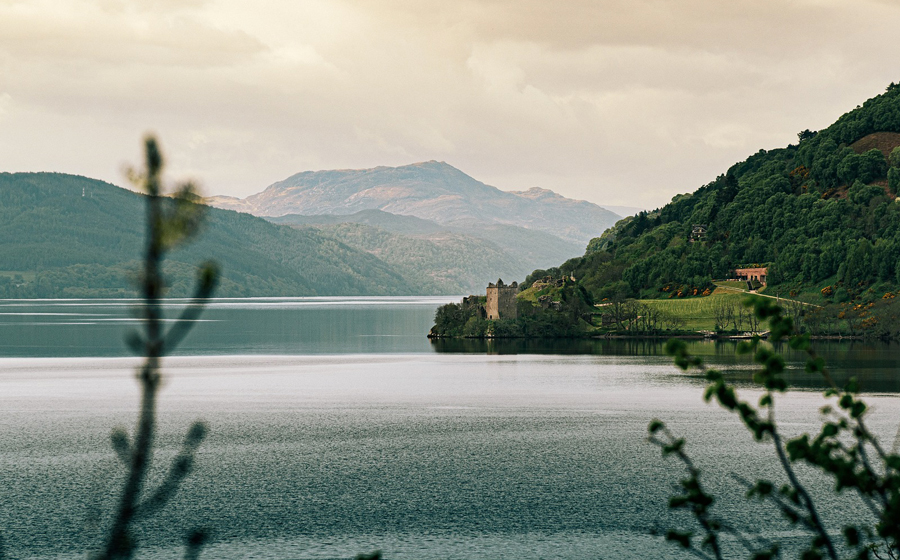
How to get there:
Edinburgh is easily accessible by plane (about 1 hour and 45 minutes from Paris, only 1 hour and 15 minutes from London), by rail (about 1 hour from Glasgow, 4.5 hours from London), or even by boat, from the Netherlands, Germany, and Scandinavian countries, operating trips to Leith, Edinburgh’s port. Don’t forget your passport if you live in the EU!
The local tram, bus and taxi network makes it very easy to get around. Rail travel is also a great option, especially for visiting the surrounding area (Stirling and its castles, St Andrews for golf and cathedrals, or the Highlands – Glencoe, Inverness, Pitlochry, etc).
À lire aussi :